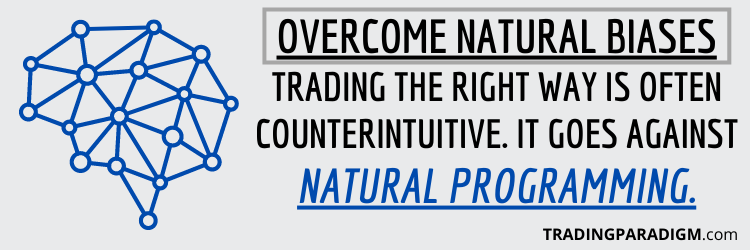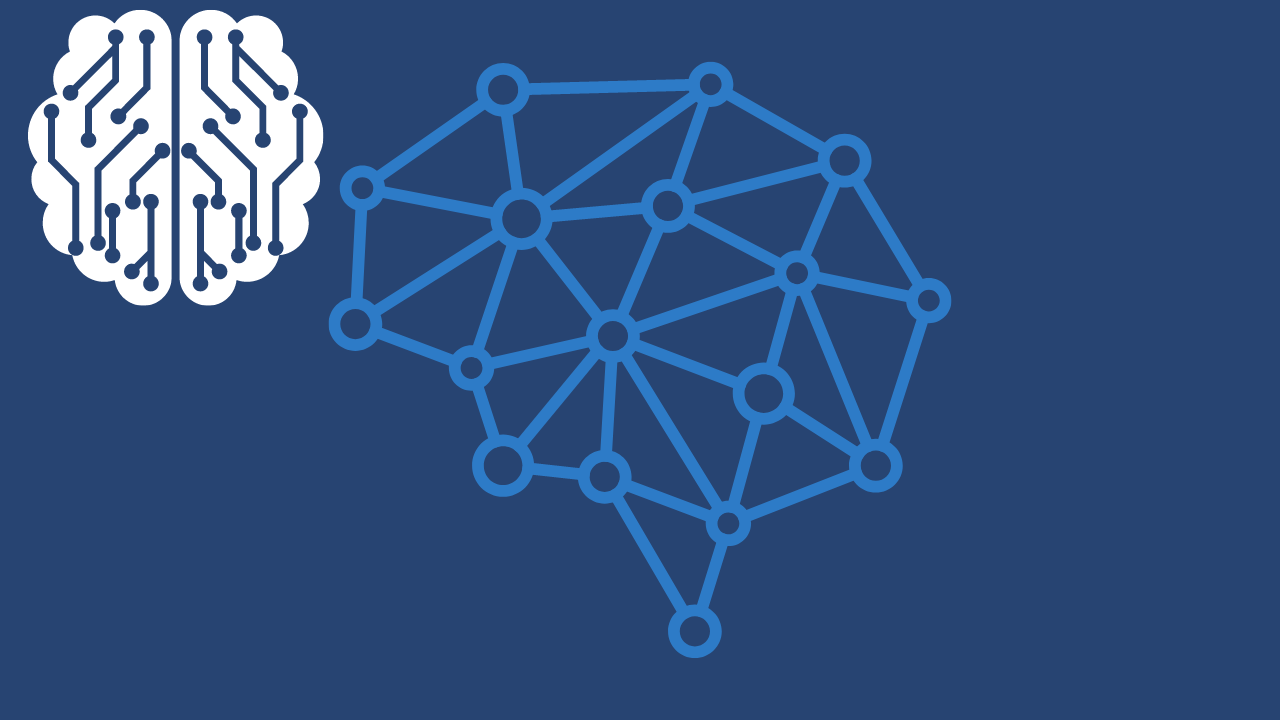Our Natural-Programming Makes Us All Bad Traders at the Beginning:
As humans, our brains are naturally wired in certain ways in order to protect us. When we encounter a physical threat (like a tiger running at us), for example, we go into fight-or-flight mode. Both our minds and bodies immediately prepare for survival.

When we enter this state, adrenaline kicks into overdrive, our perceived options decrease (all we can do is fight, flight, or freeze), and we give our emotions more power to control us. This leads to instinctive/impulsive/erratic behaviors.
While this response might be beneficial when we encounter legitimate physical threats (like the tiger we talked about earlier), it provides no benefit while operating within the market environment. All it does is reduce our ability to make clear-headed decisions.
So we have to re-program our minds to not get so easily tricked into the survival mindset. After all, the market poses no physical threat. It can’t actually hurt us in reality – only in our imagination. We hurt ourselves with our own attitudes, perceptions, and actions.
Because of this ancient survival mechanism (the stress response), we all start out as bad traders (there are no naturals) – and this doesn’t even scratch the surface of additional biases and defense mechanisms that are potentially holding you back.
The good news is that these biases/defense mechanisms can be overcome, it just takes work – and it starts with self-awareness.
3 Natural Biases That Make Becoming an Effective Trader Difficult:
There are numerous biases that can potentially impact your decision-making process as a trader – confirmation bias, anchor effect, loss aversion, attentional bias, selective perception, survivorship bias, illusory correlation, restraint bias, and more.
But the three I want to discuss further in this article are the negativity bias, Dunning-Kruger effect, and gambler’s fallacy.
1) NEGATIVITY BIAS
The negativity bias is our tendency to search for danger. This coincides with the fight-or-flight response we just talked about.
In essence, our default setting is not to view information/events from an objective perspective, but from a fear-based perspective of how we perceive it to impact us. That $1 move in a stock isn’t just a $1 move – it’s a shot at our ego, safety, and self-worth.
But personalizing short-term outcomes (which are essentially random) is a destructive way to play the game. It has the capability of not only being financially taxing, but emotionally taxing as well. Emotional capital isn’t something to disregard.
The point is – you don’t want to be psychologically battling the markets on a day-to-day basis with attitudes, beliefs and perspectives that are out of alignment with market characteristics. It’s unsustainable. You want to align with them instead.
2) DUNNING-KRUGER EFFECT
The Dunning-Kruger effect is the tendency for individuals with low knowledge/skill to overestimate their abilities and individuals with high knowledge/skill to underestimate their abilities. I see this play out all the time among market participants.
As a beginner, when you don’t even know what you don’t know – it’s common to be overconfident. You learn a little bit about candlesticks, channels, trends, support & resistance, a few indictors, price patterns, and strategies – and think you have all the answers.

But as the experienced veterans know, it’s just not that simple. There’s far more depth and nuance involved in becoming a consistently profitable trader than that. Merely understanding some basic technical analysis concepts isn’t going to cut it.
Being oblivious to what it takes to succeed might have its perks, but it eventually comes at a price (being humbled by the market).
3) GAMBLER’S FALLACY
The gambler’s fallacy is a belief that a certain outcomes is less or more likely to happen based on the outcome of previous events.
For example, if you flipped a fair coin ten times in a row and all ten landed on heads, you might think on the eleventh flip: “how could it be heads again after so many in a row? It has to be tails this time”. But there’s no connection from one flip to the next.
Every individual flip has a 50% chance of landing on tails – regardless of what happened previously (10 heads in a row). Just because there was a long streak of heads prior to the upcoming flip doesn’t make tails any more likely to appear. It remains at 50%.
This connects back to trading in the sense that you shouldn’t be too attached to short-term outcomes. You can’t read too far into the results of one or a few trades. You have to have a large enough sample size in order to accurately calculate the probabilities.
Great Traders Are Developed Through the Acquisition of New Attitudes/Beliefs/Habits:
There are no naturals in trading – I wholeheartedly believe that. Some individuals might tend to be more balanced, patient, or objective than others. But nobody is perfectly built to operate flawlessly within the market environment. It’s impossible.
I don’t mean this to be discouraging because it should actually be the opposite. If you’re willing to put the time and effort into self-transformation, there’s quite a bit of opportunity on the other side. It just requires a growth mindset and deliberate practice.
By thinking, feeling, and behaving certain ways over-and-over again, new thoughts, feelings, and behaviors that were once “unnatural” can become automatic. This is how habits and skills are built – through repetition and emotional weight.
At the start, you need the self-awareness to catch yourself in the act – and then consciously choose to think, feel, and behave in a specific way. So it’s harder to do in the beginning – it takes effort. But with enough repetition/practice, it becomes second-nature.
Every habit that you’ve ever built was created to help you (even bad ones) – whether you realize it or not. But habits that might have been effective outside of the market environment won’t necessarily translate within them. You need new, more effective ones.
You have to adapt to suit the environment you’re operating in. Environment dictates the habits/skills required for success.
Learn More in the Trading Success Framework Course
Written by Matt Thomas (@MattThomasTP)
Related Pages:
- 4 Market Characteristics You Must Align With For Success
- Failure is Only Feedback – Use Losses and Mistakes to Grow
- What is a Trading Mindset Journal – Why You Truly Need One
- Why is Day Trading So Stressful – Learn How to Overcome it
- Values and Principles to Live By as a Trader – What’s Your Mission?





This article is full of insights and quite motivating. One sure thing in life is that what a person purposes in his/her mind to achieve is achievable. Every individual is wired with intellect, skills, and talents. Everyone is gifted! but these skills and talents will remain raw and unusable until they are awakened, harnessed, or mentored. I totally agree with this, no great trader or great achiever is born. They are made through the way they channel their life and the path they took.
I appreciate your comments, Bethel – thank you!
I completely agree with what you say. I think the main point I’m trying to get across in this post (and many others) is that trading is a skill-based, peak performance endeavor. But since there’s a large element of luck and randomness at play (especially in the short-term), people don’t recognize the essential habits and skills necessary to succeed.
Too many people assume that great traders have some sort of special gift. That they just have a knack for picking stocks or other trades/investments. But there’s no magic over the course of hundreds and thousands of trades. It might seem like magic because the best traders have dedicated years of time and effort toward building the right habits and skills for long-lasting, sustainable success – but no magic exists. It all comes down to individual habits, skills, and process.